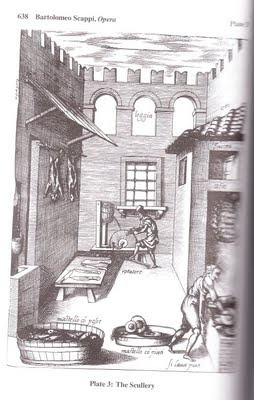 Pepper and Pirates
Pepper and Pirates by James Duncan Phillips documents the 19th century pepper trade in which ships sailed from Salem, Massachusetts, to the pepper farms of Sumatra. The trade began in the late 1700s and lasted until the mid-19th century. Salem merchants and seamen made large amounts of money, charted unknown coastlines, and had a variety of adventures.
Pepper itself was simply a valuable commodity to Phillips. He said little about its use, less about its global economic impact. He writes:
"The pepper trade in its prosperous years in Salem ran into millions of pounds, but it must not be assumed that the pepper was used to any great extent in Salem or even in America. It was reshipped...not only by Salem merchants, but by merchants from other ports in America who came to Salem to buy it." (p. 39)
The drama of the book consists of exploring the unknown geography, trading with native merchants and pepper producers, negotiating with rajahs of varying character, and fighting off a variety of attackers classified generally as Malay pirates. For example, the story -- with illustrations (top left) -- of the Malay capture and eventual release of a ship called the
Friendship. The
Friendship went to "insignificant little port" called Quallah Battoo where "a couple of bumptious rajahs had built five mud forts.... These people had a poor reputation for honesty or good behavior, but they had lots of pepper...." (p. 80) Many details followed about good-faith attempts of the ship's captain to buy pepper, and the attack by Malay pirates armed with the terrible Creese, a murderous dagger.
Another story concerns a native Malay agent named Libbee Sumat: "a double-dyed rascal if ever there was one." Sumat was trustingly employed by Captain Charles Wilkens, who had "a peculiarly beautiful ship named the
Eclipse." Instead of working for his employer, Sumat told his brother Libbee Oosoo a number of details about how the Eclipse was vulnerable. "These two rascally brothers at once came down to the ship... ostensibly with pepper to sell." After drinking tea with Captain Wilkins, "the Malays stabbed the second mate and a boy named Babbage. The captain ran toward Oosoo as he could not believe he was hostile, but the brute stabbed him three or four times and killed him." The Malays drove off the other men on board and looted the ship. (p. 107-111)
Occasionally,
Pepper and Pirates gives a hint of meals that the voyagers had to eat in the various exotic locations they visited -- usually quoted from original narratives. An 1850 voyager described a visit on shore at the fort of Pomlooma Bunda, where the host "gave us some chicken curry. I thought it was very nice although the dishes were not very clean." (p. 122) Or in 1801, on a very early visit to Nagasaki, the only Japanese port open to foreign traders, some shipmen from Salem were entertained by a merchant. He gave them a repast of "pork, fowls, meso, eggs, boiled fish, sweetmeats, cake, various kinds of fruit and sacky and tea. The lady of the house was introduced, who drank tea with each of us, as is the custom of Japan. She appeared to be a modest woman." (p. 23-24)
Phillips, who was born in 1876, wrote the book in 1949, but in style and in his feel for the material he seems amazingly close to those early American sea captains from his home Salem. Their names still represented the best families of his home town: Peele, Peabody, Endicott, and of course Phillips.

In contrast, I read a much less entertaining history of the spice routes in the area of Sumatra, the Spice Islands, and the voyages of exploration that supported the spice trade beginning in Roman times.
The Spice Route: A History by John Keay, published in 2005, is scholarly, dry, and much less amusing. Of course I learned a lot more general history of things like the Chinese explorations that took place just before the Emperors closed off the entire country. It's a much more modern book in every way, including the illustrations. Just not as obscurely amusing.




































